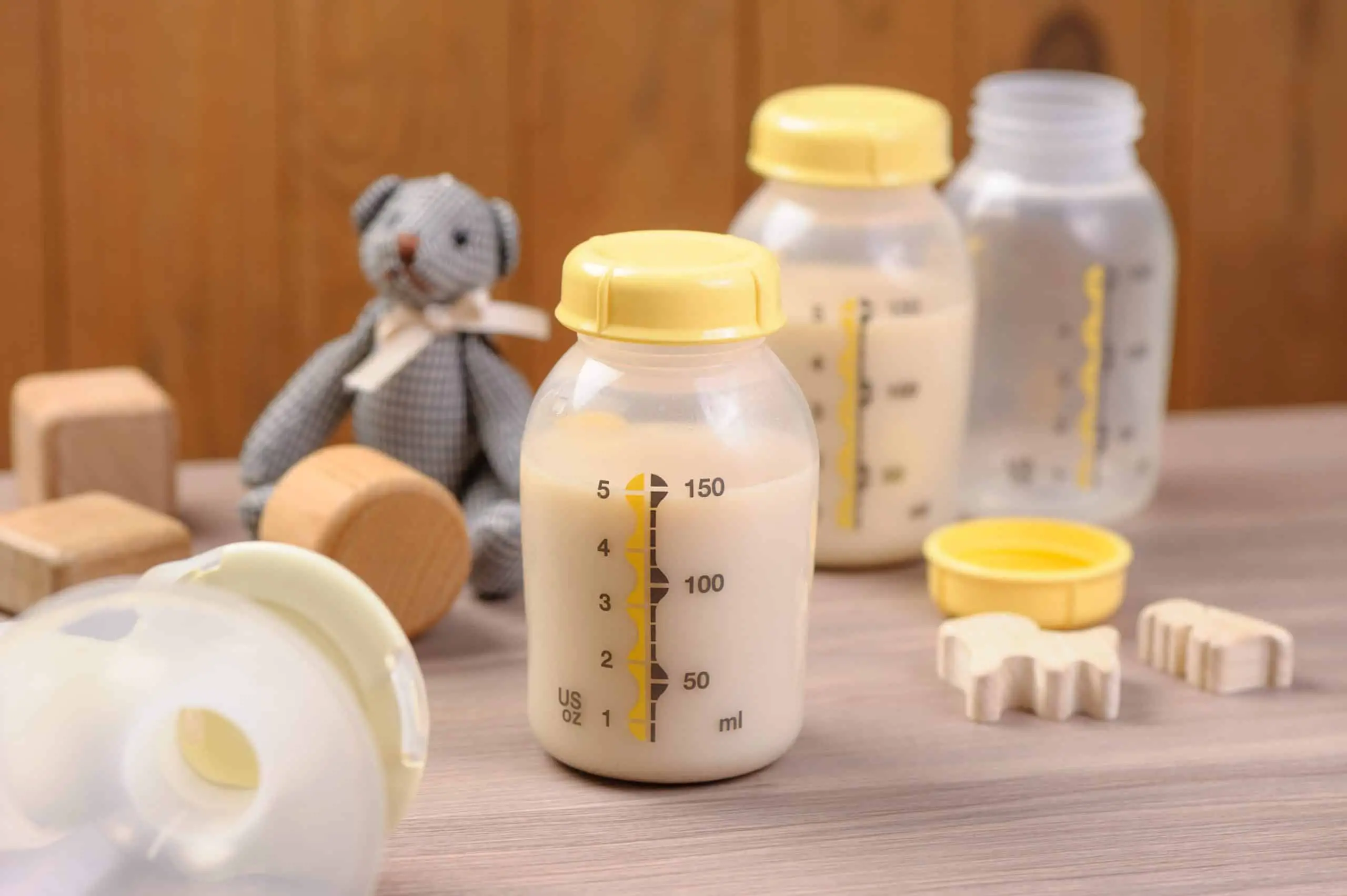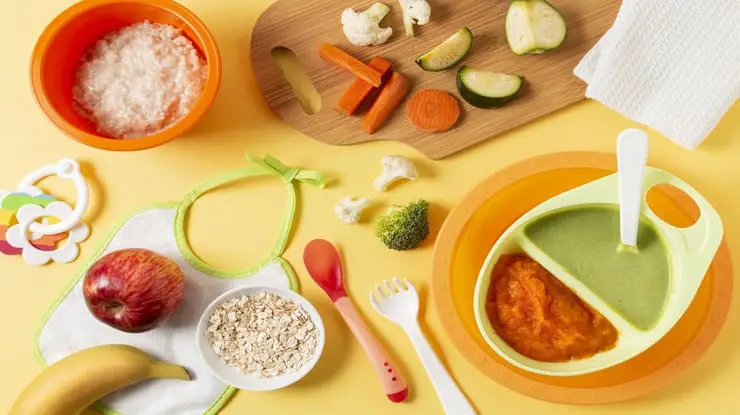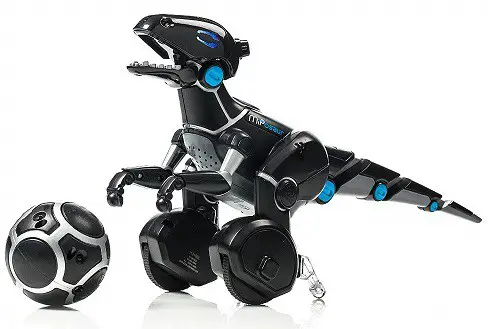How Many Times Can I Reheat Breast Milk? – The Ultimate Guide
Breastmilk that is stored, refrigerated or thawed needs to be warmed up before serving; for the babies to consume. An older baby might not be picky but a newborn does not accept a bottle of milk unless it’s perfectly warm, close to our bodily temperature. Warming up the breastmilk is also necessary to improve consistency after it’s been stored. Because when the breast milk is refrigerated or frozen, the fat tends to separate in the bottle. Bringing it back to room temperature or best, heating it, can bring back the original consistency of the milk for the baby to enjoy. When you are truly concerned to do things, there is always a right way and a wrong way to do them. Storing, refrigerating, heating, or thawing the milk are supposed to be done following sufficient knowledge, care, and concern. Babies have fragile stomach and digestive systems so they are pretty much vulnerable and dependent on choices that we make. These choices which are related to their food can nourish them or can even harm them.
To understand how to heat the breast milk, you must understand the correct way of storing breast milk first.
Storing Breast Milk Correctly
Breast Milk is stored in freezers and coolers. Always consider freezing in small amounts (2 to 4 ounces, or ¼ to ½ cups) and store them at the back of the freezers so they do not encounter a chance of thawing out.
Here are some more tips to store breast milk in the refrigerator rightly.
- Refrigerate the milk right after expressing or as soon as possible.
- Always pick BPA free products. Store your milk in clean storage bags or breast milk bottles made from high quality, safe to use and BPA free materials.
- Consider storing the milk in the coolest part of the refrigerator which is normally at the back – on top of the vegetable compartment.
- Never add body-temperature milk to already cooled milk.
How Many Times Can I Reheat Breast Milk
If you have thawed milk that your baby refuses to drink, it’s okay. You don’t need to throw it away. It is still usable in 24 hours. Generally, it is recommended that you don’t refreeze milk which you had thawed but it is not actually harmful if you store the thawed milk in the refrigerator for the next 24 hours and use it. Here are some more guidelines you would need to keep in mind before storing the milk.
- Freshly expressed breast milk can be stored in the back of the refrigerator for up to five days. However, it’s considered optimal to use or freeze appropriately within three days.
- Breast milk that has just been expressed can be kept in an insulated cooler with ice packs for up to 24 hours.
- Breast milk that has just been expressed can be stored in a deep freezer for up to one year. Use within six months is considered optimal (you can store breast milk in a normal freezer for three to six months).
- Vigorous stirring or shaking can damage some of the milk’s nutritional and protective components.
When you need the stored milk to serve your baby, you can heat it. Now, heating the breastmilk is very easy to do, but it is important that you follow the right guidelines, procedures and take certain precautions during doing it. It is a baby’s matter after all! If heated too much, the milk can even lose beneficial properties or can simply turn off your baby’s interest.
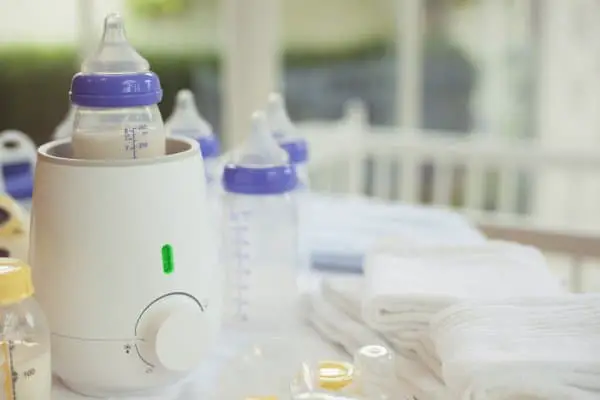
Warming the refrigerated breast milk
Warming up the refrigerated breast milk is easy and a quick thing to do. Just make sure you have clean and sterilized bottles, bowl and tea kettle or pan. Anything that you are going to use during heating the breast milk for babies should be perfectly clean, even your hands! Consider washing them after every step.
One of the most important things to realize about breast milk warming is to realize that the breast milk is never to be boiled directly in a saucepan on the stove or in the microwave.
Back to warming the milk from the fridge, all you need to do is to follow these 7 steps when following the warm water bath technique.
- Take the breast milk out of the fridge/freezer and set it aside.
- Heat water in a teakettle or a saucepan. When the water is warmed up, pour it into a bowl. Make sure the water is not very heated and is just cozy warm.
- Now, place a sealed bag or bottle of breastmilk in the bowl of warm water. Make sure the milk is sealed in a container so that it doesn’t leak out.
- Submerge the bottle or the sealed bag of milk for 1 to 2 minutes.
- When you feel like the breast milk has reached the desired temperature, take it out.
- Clean your hands and pour the milk into a bottle, or, if it’s already in a bottle, screw on the bottle nipple.
- Slowly swirl breast milk (never shake it) to mix in the fat, if separated.
Warming breast milk by warm water baths is the most followed technique. However, there are many more ways to do so, one of them being heating the milk with bottle warmers.
Warming with the bottle warmers
Bottle warmers should be selected with great concern. Read all the guidelines on warmers carefully well, completely, and follow the instructions thoroughly. It barely takes 5 minutes to read it out. The bottle warmers mostly use steam to heat up the milk, or water baths in other cases. Fill in the water reservoir with tap water, considering the instructions. Then, insert the bottle into the bottle warmer and leave it there for warming as you click the start button. Consider keeping the temperature from low to medium.
Most bottle warmers have a sensor light that turns on and off to tell you when the warming session is done. Others also make a ringing or an alarm sound when the process is done.
Running Water
Place a frozen pack of milk under cool water. Gradually increase the temperature and let it remain under the running warm water. When you feel like it’s achieving the desired temperature of warmth, set the pack aside.
Now clean your hands and pour the milk into a bottle and swirl it gently. You can use a spoon or a coffee stirrer. Never stir or shake the breastmilk vigorously, this can eliminate the beneficial properties of the milk.
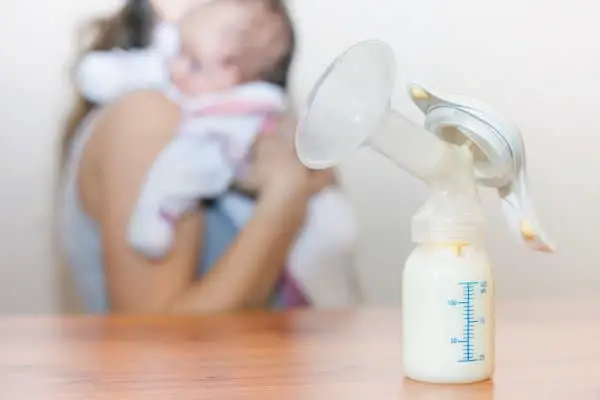
Can you Microwave Breastmilk?
It is absolutely not recommended to microwave the breast milk as it is said that the radiation from the waves can be fatal for your baby’s health.
The microwave does not heat the food evenly and can heat one part of the milk more than the other causing uneven hot spots in the milk and burning your baby.
It is believed that heating the milk in the microwave diminishes or eliminates nutrients from the food. Microwaving the breast milk will lead to nutrients and necessary antibodies being deprived from the milk.
However, you can use the microwave to heat the water that can be used to warm the breast milk.
Are bottle warmers safe to use?
Though bottle warmers are not really necessary to heat the milk, they can most definitely be used and are safe if used properly.
Though it heats the milk more evenly than a microwave, there is an increased risk of the milk being overheated. Overheating deprives the milk from the necessary nutrients and antibodies and therefore, it is strictly advised to use the warmers properly to prevent this.
Breast milk temperatures can exceed 80°F (26.7°C) in the bottle warmer, which can negatively affect the nutritional composition of the milk.
Other than the above mentioned downsides of bottle warmers, they are mostly safe. Being very easy to handle and offering a quicker way to warm the milk and keep the temperature maintained if used properly.
How long can you let the milk sit out?
Traveling or having uneven feeding routines can leave the breast milk to just sit out and not be properly stored.
The safety of the breast milk is highly dependent on the conditions it is kept under. If it is an environment with high bacteria levels like backpacks or changing rooms, then the risk of the milk going bad is quite high.
At normal conditions at room temperature (being up to 77°F or 25°C), the breast milk will remain safe for up to three and a half hours. It is very important to discard the milk if it has been sitting out for more than three hours.
If the milk has been previously stored or reheated it is good for up to two hours. It is important to discard the milk that has been sitting out for a certain amount of time.
It is strongly advised to NOT reheat breast milk that was frozen or thawed.

